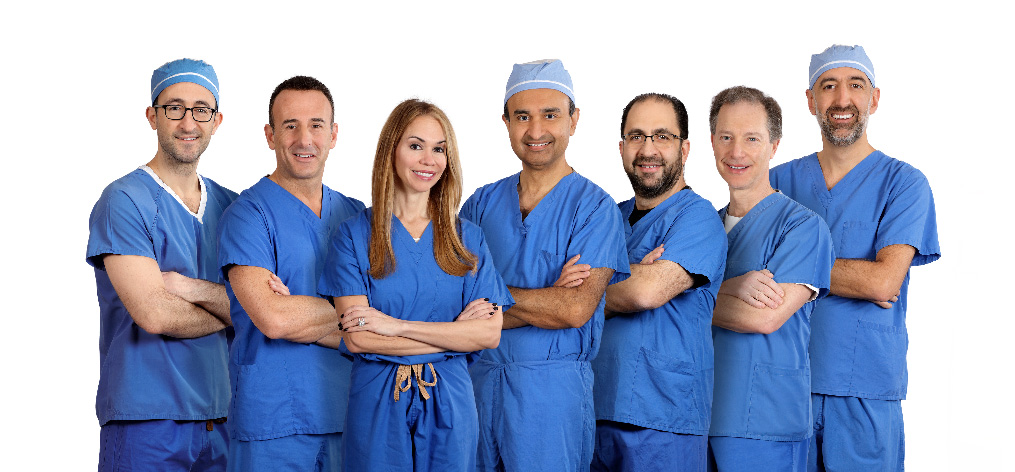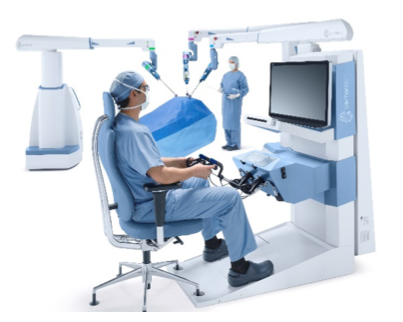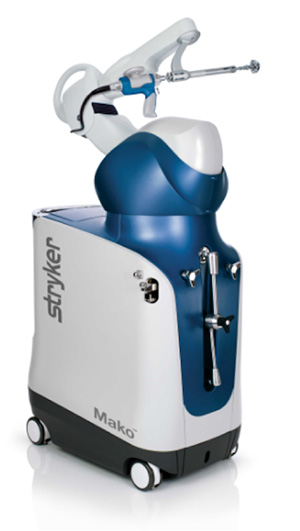Robotic Surgery

At Pascack Valley Medical Center we believe that robots don’t perform surgery. They help your surgeon see more and do more. Home to the Mako Robotic Arm, and now the first hospital in New Jersey to offer the Senhance® Surgical System, Pascack Valley Medical Center is now the home of less invasive surgeries, smaller incisions, and faster recovery times for gynecological, bariatric, general surgery and orthopedic procedures.
The latest surgical robotics technology enables surgeons at Pascack Valley Medical Center to provide a personalized surgical experience in the areas of Orthopedics, Spine, Gynecology, Bariatric and General Surgery with an emphasis on elevated patient care. Through the use of micro instruments that leave minimal scars, the approach is robot-assisted – as surgeons still perform the surgery – for enhanced precision.
About the daVinci System
Pascack Valley Medical Center uses the da Vinci System which is a robotic surgical platform designed to enable complex procedures of all types to be performed through 1 to 2 cm incisions. This system is used for a variety of surgeries including general, bariatric, urologic, gynecologic and more.
With da Vinci system, the surgeon's movements are replicated in real time. It cannot be programmed, nor can it make decisions on its own to move in any way or perform any type of surgical maneuver without the surgeon's input.
With robotic surgery, patients may experience the following benefits
- Shorter hospital stay
- Minimal scarring
- Fewer complications and site infections
- Reduced pain
- Low blood loss
- Quicker return to normal daily activities
Surgeons performing robotic surgery with the da Vinci at Pascack Valley Medical Center:
To find a physician that uses the da Vinci call 877-848-WELL (9355).
About the Senhance® Surgical System
Surgeons at Pascack Valley Medical Center use the Senhance® Robotic Surgical System for Gynecology, Bariatric and General Surgery.
The Senhance® Surgical System enhances the surgeon's senses during minimally invasive surgery. The system features a digital interface between the surgeon and patient to enhance minimally invasive surgery. The surgeon controls small surgical instruments with precision and a sense of touch, which monitors and limits excess forces generated during surgery. A small camera is controlled inside the body by tracking the surgeon's eye movements on a 3D display. The goal of digitizing surgery is to support the surgeon with state-of-the-art tools that provide control during surgery while minimizing incisions and recovery. The Senhance® System includes 3-mm diameter instruments, which can be used to perform surgery with a virtually scarless approach.
To find a physician that uses the Senhance® Surgical System call 877-848-WELL (9355).

Click Here for more on Senhance® Robotic Minimally Invasive Surgery
About The Mako Robotic Arm
Surgeons at Pascack Valley Medical Center use the Mako Robotic Arm for Hip and Knee replacement.
The Mako application is an orthopedic replacement treatment option designed to relieve the pain caused by joint degeneration due to osteoarthritis. Through CT-based 3D modeling of bone anatomy, surgeons can use the Mako System to create a personalized surgical plan and identify the implant size, orientation and alignment based on each patient’s unique anatomy. The Mako System also enables surgeons to virtually modify the surgical plan intra-operatively and assists the surgeon in executing bone resections.
To find a physician that uses the Mako Robotic Arm call 877-848-WELL (9355).

Click Here for more on Makoplasty
About the ExcelsiusGPSTM
ExcelsiusGPS™ is the next revolution in robotic spine surgery from Globus Medical. It is designed to improve accuracy and optimize patient care by using robotics and navigation, much like a GPS in your car.
On the day of surgery medical images are taken and imported into ExcelsiusGPS™. The surgeon uses these images to determine the size and placement of implants and creates a patient plan based on your anatomy. This is used to guide the rigid robotic arm to a specific region of your spine, similar to a planned route or pathway on a GPS. The surgeon uses this pathway or route to accurately place the implants using instruments.
Throughout the procedure, the surgical instruments and implants are continuously displayed on the screen for the surgeon and staff to monitor. This display allows the surgeon to view live feedback during your procedure for more preciseimplant placement.
To find a physician that uses the ExcelsiusGPSTM call 877-848-WELL (9355).





